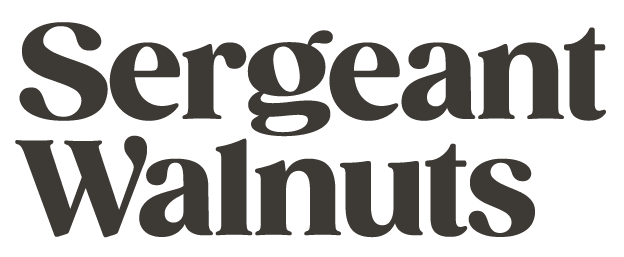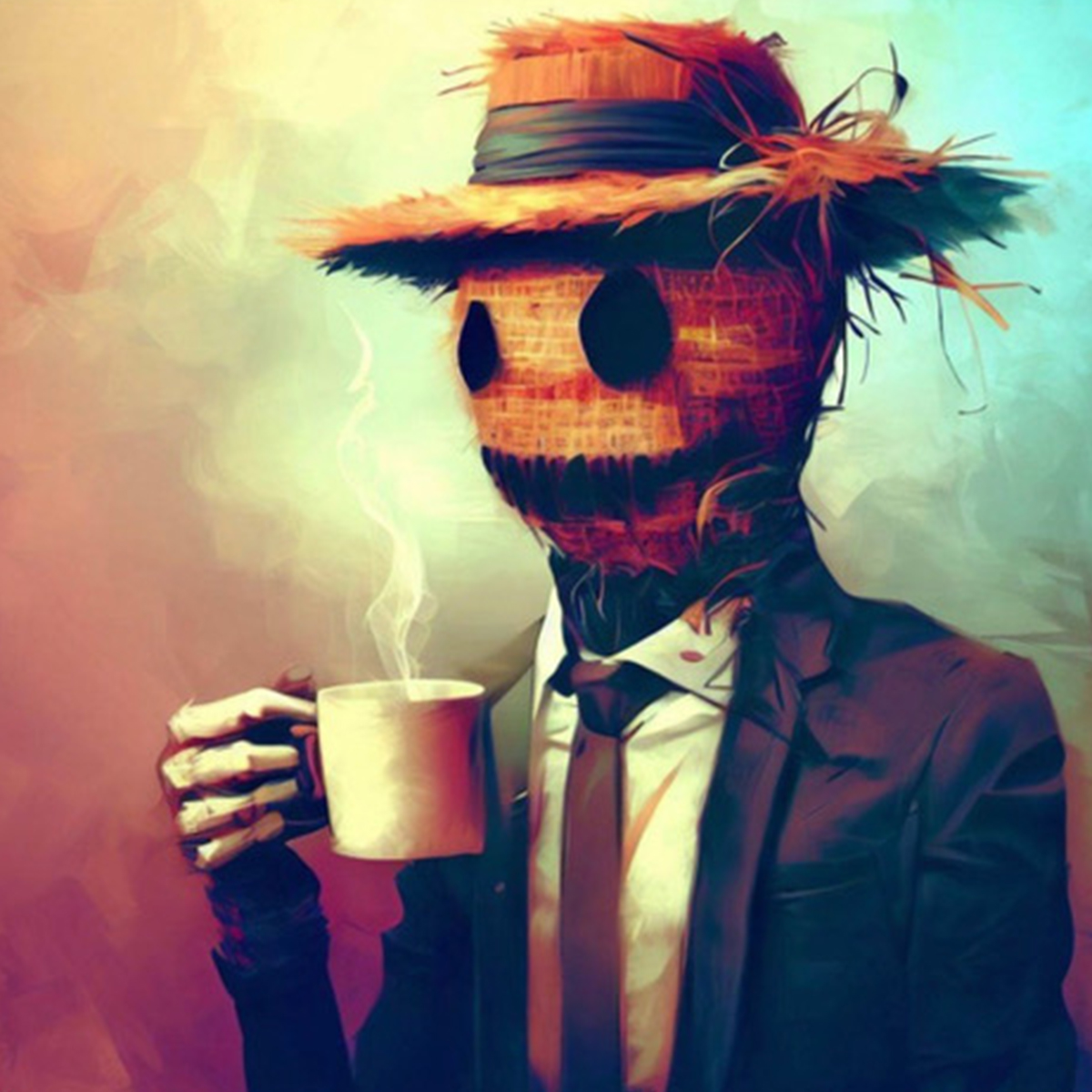Getting geeky about brand naming
If, like me, you live a low-octane life and you get a little giddy about language facts and grammar geekery, then this article might be for you.
Or maybe you’re in the process of naming something – a brand, a baby, that voice inside your head – and you could do with some solid inspiration?
Well, read on. I guarantee the following words, arranged in the order of my choosing will, at the very least, make a refreshing change from reading about AI.
Now, imagine you’re a farmer (just go with it)
You own a field full of freshly sown seeds, and you need something to stop the birds from eating them. You’re presented with two products that do the job. They look the same - they’re both human-like figures made of straw and dressed like Northern Quarter hipsters. Same price, exact same features, but differently named. One is called a Scarecrow. The other, a Hobidy-Booby. Which one are you buying?
Now, if it was me, I’m opting for the latter. But I’m a man who called my agency Sergeant Walnuts, my goldfish Swim Shady, and my left testicle Terrence Anderson III.
So the name appeals to my playful side. It’s interesting and storied, and I like saying it out loud. “Hobidy-Booby.”
If you’re a little more pragmatic, you might opt for the product that ‘does what it says on the tin’. You don’t have to be Susie Dent to work out the etymology of Scarecrow. This thing is going to frighten off avionic animals, or your money back.
In simplistic terms, that’s how brand names are usually split. There are those that are highly functional and literal in meaning (General Motors, Ray-Ban, British Telecom, Northern Rail). Then there are those that require a small leap of imagination. They’re asking you to create your own meaning by association (Apple, Amazon, Triumph, Patagonia).
Jaguar (the brand) wants to be associated with power, grace and beauty; traits you instinctively align with the animal. Dove (the brand) wants to convey beauty, innocence and purity. So, they chose to name themselves after a little white bird that just so happens to be the universal symbol for peace. Fair play.
Delving a little deeper
Between those literal and associative naming pillars, there are more considered executions when it comes to brand naming. These are either brands named after people/founders (Ben & Jerry’s, Warburtons, John Lewis) or they’re neologisms (‘made-up words’ to you and me).
Neologisms can, again, be split quite easily into brand names that offer more literal meaning (Facebook, YouTube, Topshop, PlayStation, Deliveroo) and those that need additional meaning to be created around them (Häagen-Dazs, Kodak, Doritos, Spotify, Skype).
But even those totally made-up examples carry implied meaning. Häagen-Dazs is a Brooklyn-born brand, founded by a fella that wanted his ice-cream to sound Scandinavian. Mission accomplished.
My point is, words are to writers what paint is to painters; there to be played with in almost infinite ways until you’re happy with your final creation. You may want the ‘perfect’ brand or product name, and it may exist, but, more likely, it doesn’t. The best most of us can hope for is a really solid set of options. From there, you choose the name that feels most right.
And you best believe we do have inherent feelings when it comes to language. It’s the kind of stuff that’s never really taught or explained. We just know, instinctively, when a word is trying to convey something specific.
For example, did you know that words beginning with ‘sn’ are usually associated with mouths and noses? Think snout, snort, sneeze or sniffle. Words containing ‘gl’ are oftentimes connected to the idea of vision and light – glimmer, glimpse, glisten, gloss.
These are called phonesthemes and there are lots more we can play with when we want to add some additional meaning to our brand or product name. ‘Swiffer’ is a brand name for a mop. They utilise the ‘sw’ sound, which we associate with swift swinging or sweeping movements (swoon, swirl, swashbuckle).
When it comes to naming, you have more tools at your disposal than ever before.
Phonesthemes, rhetoric, rhyme, neologisms, prefixes and suffixes, to name but a few.
And, in terms of words alone, you have access to a personal resource far greater than even the great William Shakespeare did. Author and Etymologist, Mark Forsyth, estimated that the greatest playwright of all time likely had a vocabulary consisting of about 20,000 words. Most modern, educated English speakers today have a vocabulary of up to 50,000. You literally have more words floating about your brain than the guy who wrote Macbeth.
That’s because the English language is bigger now. Shakespeare wouldn't have known words like internet, selfie, twerk or manscaping. But then again, when the right word wasn’t at hand, Billy did have a particular knack for simply making them up.
In fact, since English is what most of the literary greats wrote in, we can now pack our dictionaries with words made-up in the minds of geniuses like Shakespeare, Shaw and Milton. Critical, leapfrog, monumental, castigate, majestic, obscene, frugal, radiance, excellent, countless, submerged, gust, hint, hurry, lonely. These words, and many more, were simply penned into existence. As a society, we still do this today – humblebrag, buzzworthy, Platty Jubes.
Shakespeare is credited with conjuring up nearly two thousand words alone, often turning verbs into adjectives, smashing words together via portmanteau or going wild with wordsmithery after one too many absinthes.
English is the vastest of all the languages, probably because it stole most of its words from different parts of the world. (Even the word alphabet is Greek.) English is so big, in fact, that we had to invent the thesaurus. No other language has quite enough words to justify a book of synonyms.
Of course, there are plenty of words that don’t have a synonym, like, erm, synonym. That’s an example of language irony, much like the word abbreviation being really long or the word pronounceability being hard to say.
Anyway, what was my point? Ah yes, Shakespeare would be great at naming brands. And you can be too. Just put down the thesaurus and use the tools at your disposal.
“What’s your favourite brand name, Gary?”
Thanks for asking! It’s Gobstopper. You know, those perfectly spherical hard candies that your mum used to give you to shut you up for a week or two.
If there was a Venn diagram for brand/product naming (and there is, for I have created one) Gobstopper sits at the centre. It is very functional, and somehow very playful at the same time. It is a made-up word (a portmanteau to be exact) and yet you instantly ‘get it’. In brand naming terms, it’s a thing of beauty. (Incidentally, in the US, Gobstopper was rebranded to Jawbreaker, and I can see why. But it does seem to take on a very different tone with this moniker. Bit aggressive innit?)
Back to Hobidy-Booby, because I didn’t just make that up you know. What do I look like, Shakespeare? (Don’t answer that because I just realised I do bear a passing resemblance.)
Hobidy-Booby was once the accepted name for scarecrows, but its origins seem to be a little meanspirited. You see, being a scarecrow was once an actual job that an actual human would do. And since you didn’t need to be particularly highly-skilled, farmers would often hire ‘boobies’ – a slang term for ‘stupid person’. The ‘hobidy’ bit likely came from ‘hobbledehoy’ – a very old term meaning ‘awkward youth’. So, yeh, being a scarecrow back in the day was a job best suited for silly young lads. My nephews would have killed it.
Whether you prefer Scarecrow or Hobidy-Booby, it’s clear that both names are outstanding in their field. (Sorry, not sorry).
And on that note, let’s wrap this up. Next time you’re naming, try getting a little geeky. It’s what all the cool kids do.
Of course, with all that said, if you want to save yourself from the chaos of brain-bending brand naming, just let someone else do it for you.
Sergeant Walnuts is waiting.

